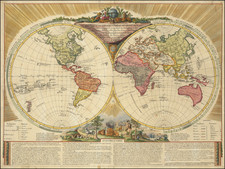Search
Le Masson le Golft was a French naturalist, scientist and academician, best known for her work Balance de la Nature (1784), in which she evaluated hundreds of animals, plants and minerals and assigned grades to each based on God's "harmonious design." Based in Le Havre, Masson le Golft was not university-educated due to her sex; instead, she learned from the astronomer and naturalist Jacques-Francois Dicquemare, a friend of her fathers who specialized in the study of mollusks.
After Dicquemare’s death in 1789, Masson le Golft spent years trying to publish his tome on shellfish, but the financial constraints of publication were too much to overcome. She also continued her own work, teaching geography, geometry, and drawing and writing works on natural history and education. She corresponded with luminaries like Condorcet and was a corresponding or honorary member of several academies, including the Circle des Philadelphes du Cap-Francois, the Madrid Royal Academy of Education, and the Royal Society of Bilbao.
Her contribution to cartography is a fascinating thematic map that visualizes human difference—one of the first anthropological maps even published. Esquisse d'un Tableau General du Genre Humain (1787) was intended as a teaching tool as well as a visual aid to communicate Masson le Golft’s thoughts on the important topic of human development and differentiation, a popular subject in Enlightenment Europe.

